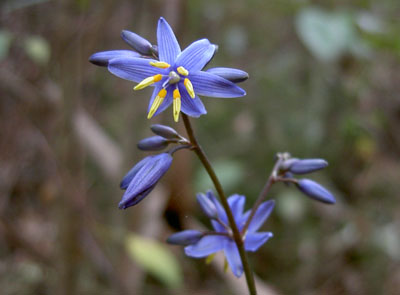 Bushcare and Bush Regeneration
Bushcare and Bush Regeneration 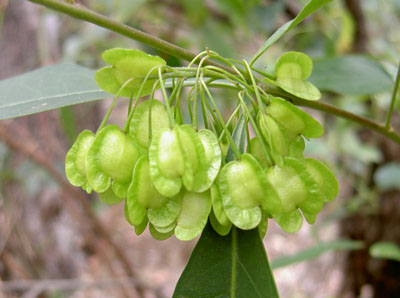
at the Cumberland State Forest, New South Wales, Australia
 Bushcare and Bush Regeneration
Bushcare and Bush Regeneration 
at the Cumberland State Forest, New South Wales, Australia
Cumberland State Forest, located in metropolitan Sydney, contains 40 hectares of native forest. The original privately-owned land was cleared in 1908. In 1938 its management was taken over by the then NSW Forestry Commission, and one third of the land was planted as an aboretum while the rest was allowed to regenerate naturally. What you see today is more than 50 years of forest growth.
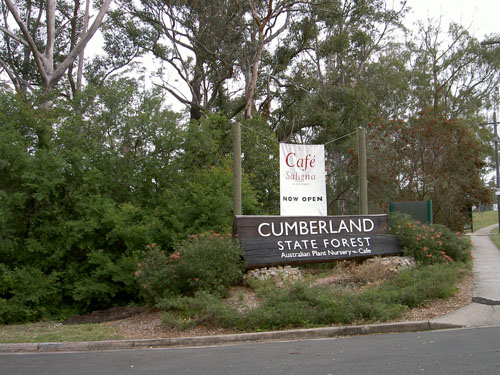 Wildlife
WildlifeCumberland State Forest has a rich population of birds. Of the 60 breeding species, the more unusual include the powerful owl and the satin bowerbird, the tawny frogmouth and the bell miner. Other animals include the ringtail possum, brushtail possum, sugar glider and boobook owl. Amphibian species in the forest include the bleating tree frog and the common eastern froglet.
Bush regeneration is a technique used to maintain a healthy forest environment by reducing weeds and allowing native plants to dominate. The Cumberland Bush Regeneration Program is a community activity, managed by Forests NSW staff and carried out with the help of volunteers.
Volunteers
By becoming a volunteer, you can get involved in a range of activities:
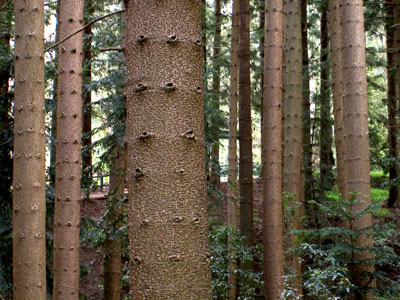
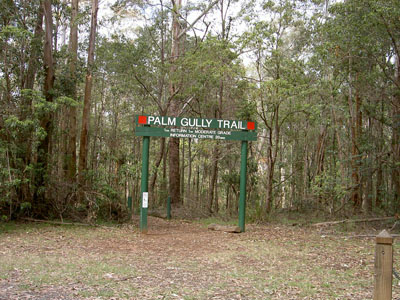
Why do Cumberland State Forest need Bush Regeneration?
Bush Regeneration is much more than just applying the techniques. It is important to understand the big picture and have a long-term view. After spending significant time and effort assessing the Cumberland State Forest it became clear that Nature has her own ways of healing the “wounds” created by human. Sometime we need to step back and try to observe and understand how Nature is doing her work. If we understand the big picture and have long-term vision we can lend Nature a helping hand whenever it is needed. But we must not play God and dictate how Nature should do her work.
For example, in the Cumberland State Forest erosion caused by rain and stormwater is a major problem. Nature is trying to remedy this problem by banking up debris thus slowing down and in some cases diverting the flow. If we understand the holistic picture we will not remove the debris to make the site aesthetically “neat”, rather we should try to help Nature by introducing erosion control species along the bank.
Another example can be seen at Lake Oratava near the Northern entrance of the forest. Over the years due to urban development and stormwater the lake is fully silted in forming a small "wetland" consisting of mainly garden escapes, Tradescantia fluminensis (Wandering Jew) and Impatien. Nature has effectively turned Lake Oratava into a natural filter which traps and stops excessive nutrients, seeds, propagules and pollution from spreading into the natural bushland.
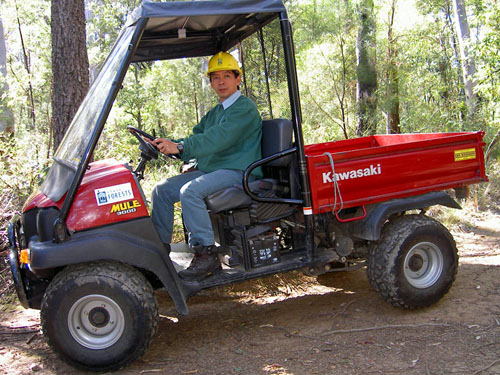
Human settlement has drastically changed the nutrient, soil and the ecology of the Cumberland State Forest Over time nature has responded by introducing native rainforest colonisers such as Pittosporum undulatum and even the less desirable Ligustrum lucidum and Lantana camara. It is a natural successional process in response to changing conditions. In this case we can help Nature by removing these colonising “weeds” in stages with minimal or no usage of sprayed herbicide, giving native species a chance to regenerate at each intermediate stage. Brush matting, direct seeding, planting and raking the soil would also help the regeneration process.
Economically this approach might not be very sound. But on the other hand economics is one of the major causes in the destruction of our environment. So the question is: How can we achieve a balance between the economical demands and our idealistic vision of restoring the natural bushland, so that we can achieve a win-win outcome?I joined the Bush Regenation Team on the 17th of August 2005. Our team consists of three Rangers: Tim, Amelia, Mike and two Bush Regenerators: myself and Scott. Our bushland management strategies and objectives will cover the following areas:
- Assess all parts of the forest and develop a management and action plan.
- Carry out bush regeneration activities in affected areas especially long the boundary of the forest.
- Carry out regular maintenance of good bushland areas to encourage natural regeneration and build up resilience.
- Recording and documenting the fauna and flora species in the forest.
- Keeping records of work carried out e.g. weed removal, herbicide used, planting, seed collection, erosion control etc.
- Develop site maps, species maps, status maps etc. These will be compiled in the Geographical Information system (GIS) to build up a historical and an evolutionary picture of the forest.